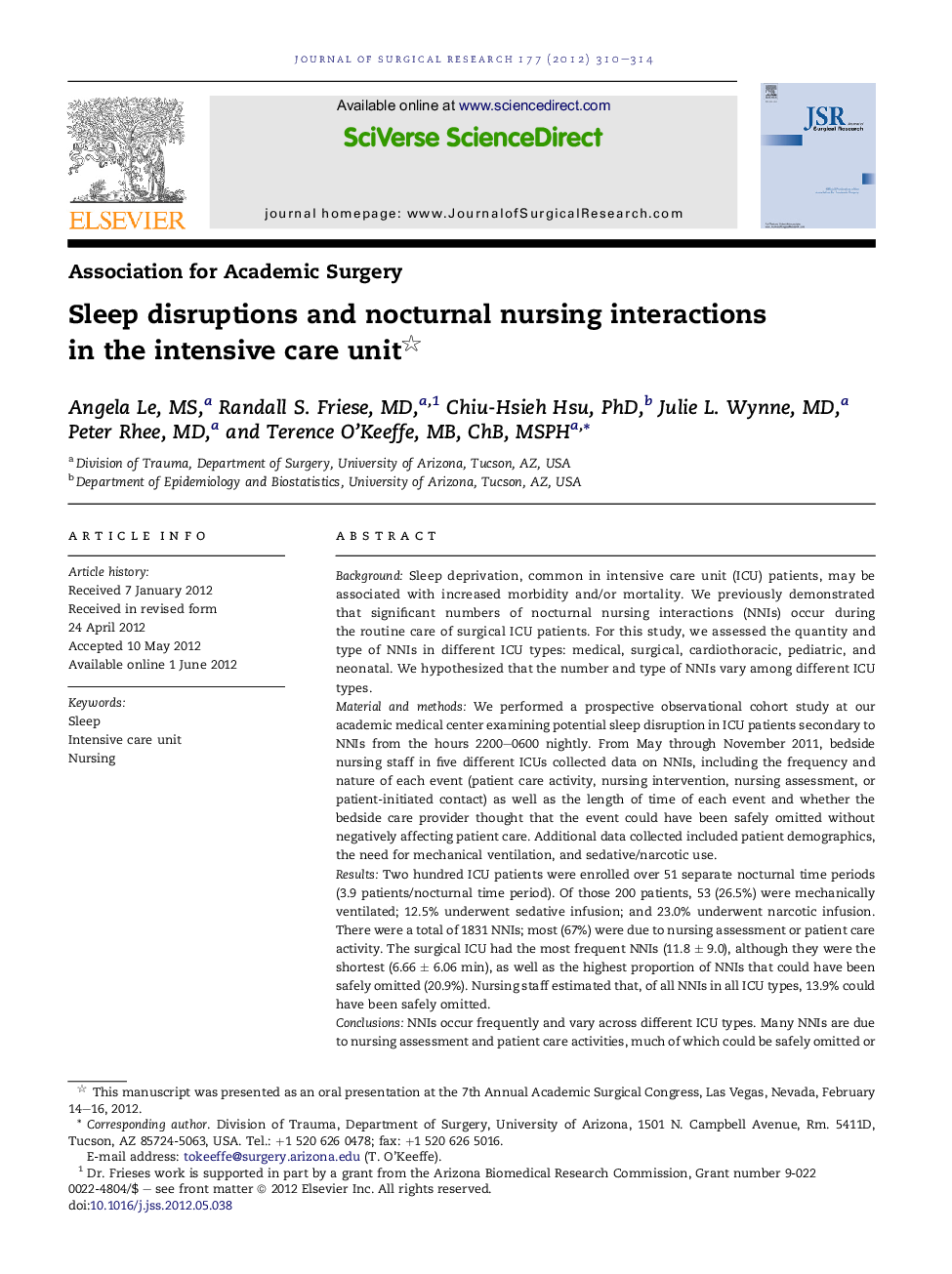| کد مقاله | کد نشریه | سال انتشار | مقاله انگلیسی | نسخه تمام متن |
|---|---|---|---|---|
| 4301224 | 1288434 | 2012 | 5 صفحه PDF | دانلود رایگان |

BackgroundSleep deprivation, common in intensive care unit (ICU) patients, may be associated with increased morbidity and/or mortality. We previously demonstrated that significant numbers of nocturnal nursing interactions (NNIs) occur during the routine care of surgical ICU patients. For this study, we assessed the quantity and type of NNIs in different ICU types: medical, surgical, cardiothoracic, pediatric, and neonatal. We hypothesized that the number and type of NNIs vary among different ICU types.Material and methodsWe performed a prospective observational cohort study at our academic medical center examining potential sleep disruption in ICU patients secondary to NNIs from the hours 2200–0600 nightly. From May through November 2011, bedside nursing staff in five different ICUs collected data on NNIs, including the frequency and nature of each event (patient care activity, nursing intervention, nursing assessment, or patient-initiated contact) as well as the length of time of each event and whether the bedside care provider thought that the event could have been safely omitted without negatively affecting patient care. Additional data collected included patient demographics, the need for mechanical ventilation, and sedative/narcotic use.ResultsTwo hundred ICU patients were enrolled over 51 separate nocturnal time periods (3.9 patients/nocturnal time period). Of those 200 patients, 53 (26.5%) were mechanically ventilated; 12.5% underwent sedative infusion; and 23.0% underwent narcotic infusion. There were a total of 1831 NNIs; most (67%) were due to nursing assessment or patient care activity. The surgical ICU had the most frequent NNIs (11.8 ± 9.0), although they were the shortest (6.66 ± 6.06 min), as well as the highest proportion of NNIs that could have been safely omitted (20.9%). Nursing staff estimated that, of all NNIs in all ICU types, 13.9% could have been safely omitted.ConclusionsNNIs occur frequently and vary across different ICU types. Many NNIs are due to nursing assessment and patient care activities, much of which could be safely omitted or clustered. A protocol for nocturnal sleep promotion is warranted in order to standardize ICU NNIs and minimize nighttime sleep disruptions.
Journal: Journal of Surgical Research - Volume 177, Issue 2, October 2012, Pages 310–314